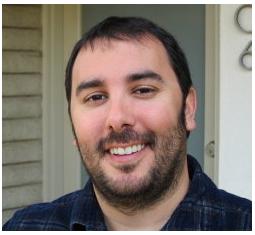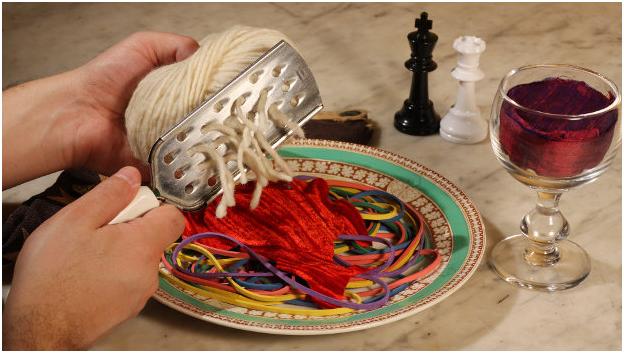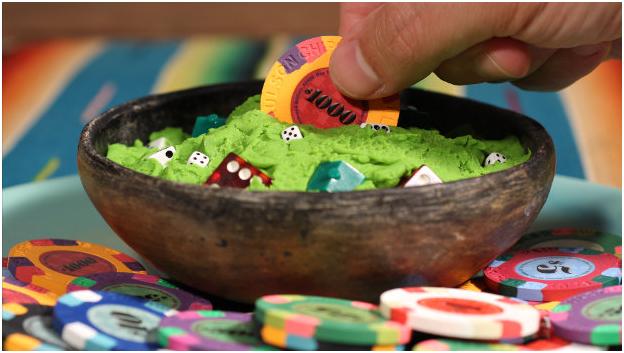 PES is the creator of some of the most widely viewed stop-motion films of all-time including Roof Sex, KaBoom!, Game Over, Human Skateboard, Western Spaghetti and Academy Award nominee Fresh Guacamole.
PES is the creator of some of the most widely viewed stop-motion films of all-time including Roof Sex, KaBoom!, Game Over, Human Skateboard, Western Spaghetti and Academy Award nominee Fresh Guacamole.
He burst onto the scene over a decade ago in 2002 with Roof Sex, a short film depicting two chairs having sex in broad daylight on the rooftop of a building in the busy New York City.
PES has built a career around pairing everyday objects with seemingly unrelated activities using witty but thoughtful stop-motion animation films and commercials. PES is a master of very short but very complex films, deftly mixing numerous subtle and brash ideas into a highly orchestrated audience experience. His uncanny knack for transforming familiar objects through stop-motion animation has earned him global recognition and dozens of honours, including an Academy Award nomination for Fresh Guacamole in 2013, which also holds the accolade of being the shortest film ever nominated.
And PES is one person, not a film collective or a production company.
AnimationXpress.com’s Sidharth Iyer recently had a chance to speak to PES (a.k.a Adam Pesapane) about his work, his filmmaking style, his love for shorts and also how to make a ‘Submarine Sandwich’ the PES way.
Talk about your early days and how did stop-motion animation happen?
When I was growing up I didn’t know anything about animation, I used to paint and draw a lot and my parents supported that. When in high school I used to showcase my work to classmates and others who were really interested in art. By the time I was getting to college, I got into film making, but I never really thought of it seriously.
I moved to New York in the late 1990s and I got into a big advertising agency. This is where I really got to see the best of creative ideas at my disposal and that really egged me on to do something on these lines.
The US has always had strict censorship for the broadcast space, but when I got to see the things coming out of the Netherlands and Sweden, I was amazed that most of it was even allowed on television, as they were really showing some ahead of the time content. I was inspired by this idea of short content, through advertisements and music videos.
The first films I made were mostly live action films, I didn’t catch the animation bug till I completed my first project, then I came across a film on stop-motion animation by chance in a theatre, and I got so fascinated that I bought more of the director’s VHS tapes from the 60s and 70s and learnt how he used stop-motion animation with objects and told a story so simple but just so unimaginable.
There is when I first thought of ‘Roof Sex’ – where you get to see two chairs having sex on the New York City rooftop. Everyone thought that I was insane to create such a film, but I still made it and that is when I first recognised the power of the internet, after seeing the response I got for the video in just a matter of a few days.
How do you think of such ideas? How do you draw the connotations between the objects you use?
I always used to carry a little paper and pen all around. Now I carry a camera and an iPhone. When I’m searching for objects; I’m always finding ideas at places like flea markets. But I’m also just writing ideas. It’s very important to put things down.
My films are just ideas that floated through my head but I feel that I need to show it to other people and either laugh along or laugh at my sense of humor, which I bring across in it. So most of it is from things that I read or really find interesting; like I always thought that avocados look like grenades and so I always fantasised that I throw it across the store and it blows up. But I wanted to package this idea, so what could an avocado do… simply make Guacamole. So I am struck with one image and then I just devote myself into finding a place to house that image. Then the whole thing is built around it. I am actually just casting objects instead of people in my films, so that’s the secret of my success. People like to look at these videos and have a good laugh or just smile thinking… ‘Hey I too have dreamt of weird things like this!’ So if I can get that smile on someone’s face, my job is done.
So what’s the story behind ‘Submarine Sandwich’?
I grew up in New Jersey, which is the home for the submarine sandwich, I grew up in an Italian-American family, so it was something that I grew up on and related to. I was in the museum of Modern Art, New York City. There was a Daily slicer on a pedestal featured as an exhibit and it sparked an image as to what would my meat be to slice, so I got reminded of the boxing glove, where the knuckles are against the blade and the thought of that was just visceral. So it grew into becoming a proper sandwich, for which I would need a Daily case and a Daily set-up, so everything grew out of that one kernel of an idea.
Which are the softwares that you use? And what is the cost of production for one such movie?
I used to use a LunchBox but now everything is done with Dragon Frame. It’s not that it doesn’t have its annoying things, but it still has many more benefits. I use Dragon Frame for the stop-motion frame grabbing technique that I use, I use Final Cut Pro for editing, the sound mixing is done by a professional Foley artist, who assembles the mix in pro-tools as I oversee the process. And a tiny bit of retouching in Photoshop for getting the right image and we’re done.
Sometimes I need to create a 3D model as I shoot all my films in front of the camera, there are no digital elements in my films, but sometimes I use Z-Brush or Mud-Box and work with people who can design models, get them 3D printed and painted to look realistic before going into my frames.
I prefer to do the sound design myself. There are very specific things that I hear where I think a certain sound will help connect with an image. Usually I have to go get that sound because it doesn’t exist in a library. Occasionally I make a film where all the sounds are pulled from a library. I did KaBoom, which was a little war film that’s clearly done with war sound effects. In 2010 I did a film called The Deep, which is a trip to the bottom of the ocean. All those were realistic sounds found in Hollywood sound libraries. But on films like Western Spaghetti and Fresh Guacamole you can’t just pick them out from a sound library, there needs to be some level of authenticity to the sound as well.

Every film is different, the physical cost for a project can be anywhere from $50,000-$100,000 to make a film like this (the right way). I usually use crowdfunding platforms like a Kickstarter to collect the resources for my projects. I hire teams of professionals on the way to help me on my projects, studio space, but always I want my films to look simple, not really look over produced. Most of my projects require long gestation period and are created over a span of seven to eight weeks.
Do you always want to make short films? How different will your feature venture be?
I like short films, I remember when I started out to watch films at festivals, I wanted to shoot myself because it really aggravated me, if a film which was 5 minutes long could have managed to tell the same thing in under 2 minutes. I always felt that it was an insult for me as a viewer, and the directors need to know the length of their idea. As a film maker one should ask himself how long is this idea and how much time will a viewer spend on my film. I am very sensitive on this topic; I would rather make a one minute film that people watch five times than make a five minute film that people barely watch even once.
I wanted more people to watch my films, I remember the time when people felt putting things online meant demeaning the value of the film. Some films of mine like ‘The Deep’ didn’t go down well with the online audience but it was really well received by people in the festivals as its better enjoyed in a dark environment. So no one can really tell what works with the audience.
My films themselves draw a lot more from the heritage of advertising than from narrative storytelling. You have an idea and in thirty or sixty seconds you need to communicate that idea and hopefully some of that rubs off on your product. That format is not really about character development. It’s more about telling a joke or getting a certain idea across. My films don’t really have characters unless you consider an avocado going from whole to mush a character arc.
In my opinion a short can be even more powerful because if you can make something that people want to re-watch dozens of times it really allows you to connect. People are used to responding to these short format films because commercials have been a successful medium for fifty odd years. So our brain is already in tune with this idea of highly condensed storytelling.

What’s PES serving us next?
I am not too sure which short film will be next, but I am certainly moving out from the cooking business. I am also working on the couple of feature films which have been under development, and have been developing a TV show as well. I will continue to make short films because there is nothing standing between you and your idea, without the sort of complexities involved with a larger film.
I want to always be known as an idea guy, I am at a stage in my life where I want to create a lot more content and oversee people working on my ideas. I used my hands and myself in most of my films till now because I wanted my hands to be animated in a specific way. So I really need to cross that bridge now, and allow others to be more involved in my ideas – that’s progression.
It’s also becoming very difficult to convince people with my ideas as they are so outlandish that unless they see them they don’t really understand how it’s going to turn out. I want to work with companies like Nikon who come on board and say that do your thing and we trust your work and use our camera as well in the process (laughs).
